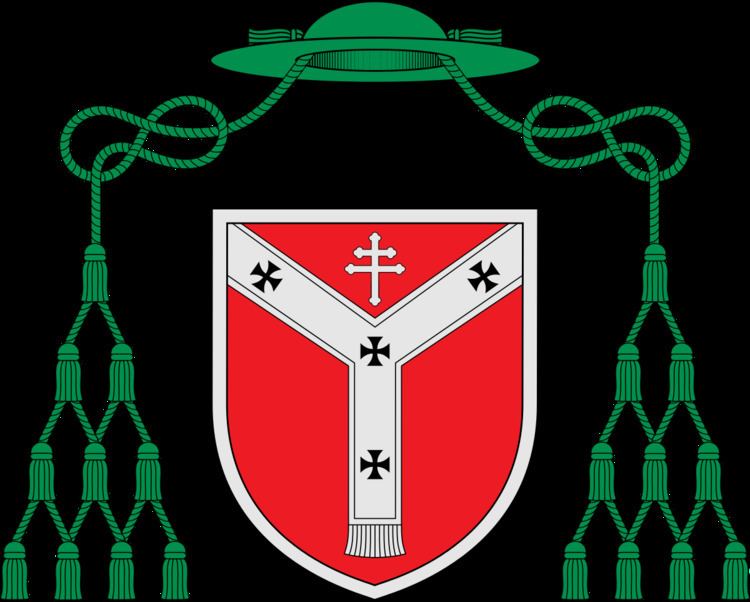Country Wales, England Parishes 60 Area 3,064 km² Phone +44 29 2022 0411 | Ecclesiastical province Cardiff Denomination Roman Catholic Archbishop George Stack Secular priests 62 | |
 | ||
Territory Historic counties of Hereford, Monmouth and eastern Glamorgan Population
- Total
- Catholics (as of 2013)
1,500,500
144,000 (9.6%) Address 43, Archbishop's House, Cathedral Rd, Cardiff CF11 9HD, United Kingdom Cathedral Cardiff Metropolitan Cathedral Hours Closed now Tuesday9AM–5PMWednesday9AM–5PMThursday9AM–5PMFriday9AM–5PMSaturdayClosedSundayClosedMonday9AM–5PMSuggest an edit Profiles | ||
The Roman Catholic Archdiocese of Cardiff (Latin: Archidioecesis Cardiffensis; Welsh: Archesgobaeth Caerdydd) is an archdiocese of the Latin Rite of the Roman Catholic Church which covers the south-east portion of Wales and the county of Herefordshire in England. The Metropolitan Province of Cardiff Wales and Herefordshire therefore covers all of Wales and part of England. Cardiff's suffragan dioceses are the Diocese of Menevia and the Diocese of Wrexham.
Contents
History
The origin of the modern diocese can be traced to 1840 when the Apostolic Vicariate of the Welsh District was created out the Western District of England and Wales. The Welsh District consisted the whole of Wales and the county of Herefordshire. When Pope Pius IX judged that the time was right to re-establish the Catholic hierarchy in Wales and England in 1850. The southern half of the Welsh District became the Diocese of Newport and Menevia and was a suffragan of the Archdiocese of Birmingham. It had its pro-cathedral at Belmont Abbey. In 1895, boundaries were redrawn, and the territory covering Glamorgan, Monmouthshire and Herefordshire was named the Diocese of Newport. Finally, in 1916, without further adjustment of boundaries, the territory was raised to the status of an archdiocese, and given the title Archdiocese of Cardiff. The Episcopal Seat is now located in Cardiff, at St David's Cathedral.
Timeline
As all of the Roman Catholic diocese in Wales are part of the ecclesiastical province of Cardiff the history of the archdiocese and its suffragan dioceses are intertwined:
Overview
The current ecclesiastical territory of the diocese comprises the local government areas of Cardiff, Bridgend, Vale of Glamorgan, Newport, Torfaen, Blaenau Gwent, Monmouthshire, Merthyr Tydfil, Rhondda Cynon Taff and Herefordshire. Altogether there are 61 parishes. On 19 April 2011, George Stack was appointed to succeed Peter Smith, who was translated to Southwark in 2010. He was installed as Archbishop on 20 June 2011.
Ordinaries
Deaneries
There are a total of six deaneries in the Archdiocese of Cardiff, each of which cover several churches in that area, overseen by a dean.
The deaneries include:
